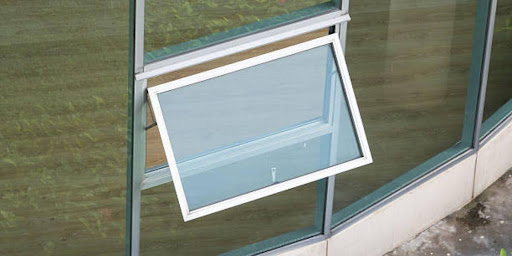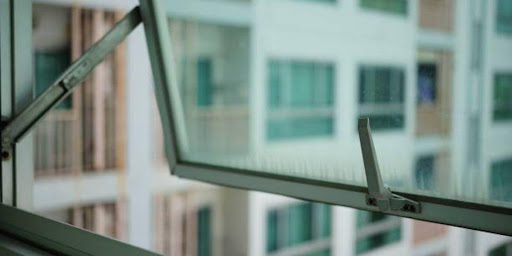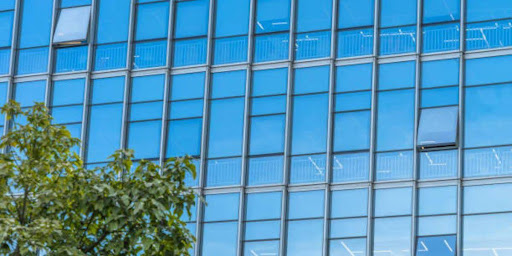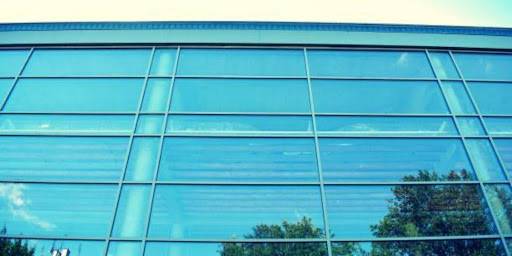Power Articles
Industry Elevating Content
Aging in Place Modifications: Home Improvements for Accessibility and Comfort for Seniors

PowerArticles
Dec. 5, 2023
In the ever-evolving landscape of home improvement, the significance of energy-efficient solutions has become increasingly paramount. Among these innovations, Low-E (Low Emissivity) glass windows stand out as a key player in optimizing residential energy performance. These advanced windows incorporate a microscopically thin, transparent coating that significantly reduces heat transfer while allowing ample natural light to permeate interiors.
As home improvement companies strive to offer sustainable and cost-effective solutions to their clientele, understanding the principles and benefits of Low-E glass windows becomes essential. From enhanced insulation to reduced utility costs and increased overall comfort, this article aims to unravel the intricacies of Low-E glass technology, empowering home improvement professionals to make informed recommendations and cater to the growing demand for energy-efficient solutions in the ever-discerning market.
What is Low-E Glass?
Low-E, or Low Emissivity, glass is a technologically advanced glazing solution designed to minimize heat transfer through windows while allowing visible light to pass through. This specialized glass is coated with a microscopically thin, transparent layer that reflects heat, both from outside and inside, back to its source. This unique characteristic contributes to its energy-efficient properties and makes it an ideal choice for environmentally conscious homeowners.
Low-E glass is manufactured by applying a microscopically thin coating of metallic oxide to the surface of the glass. This coating reduces the emissivity of the glass, meaning it minimizes the amount of infrared and ultraviolet radiation that can pass through. As a result, Low-E glass effectively regulates the transmission of heat, providing insulation and reducing the need for excessive heating or cooling.
How Low-E glass works to regulate heat transfer and UV radiation
Low-E glass works by reflecting heat back to its source, whether it’s the sun or indoor heating, preventing it from entering or escaping through the windows. This intelligent heat management contributes to maintaining comfortable indoor temperatures year-round. Additionally, the coating blocks a significant portion of harmful UV radiation, offering protection to both occupants and interior furnishings.
Types of Low-E coatings and their impact on window performance
There are different types of Low-E coatings, each with specific characteristics influencing window performance. These coatings can be categorized into hard coat and soft coat options, each offering unique benefits in terms of durability, energy efficiency, and visible light transmittance. Understanding these variations allows home improvement professionals to tailor their recommendations based on clients’ specific needs and preferences.
Benefits of Low-E Glass Windows
The adoption of Low-E Glass windows brings an array of benefits, aligning with the priorities of energy-conscious homeowners.
Improved Energy Efficiency
Reduction in heating and cooling costs
Low-E Glass windows significantly reduce the need for excessive heating or cooling, leading to substantial energy savings for homeowners. This not only aligns with environmental sustainability but also appeals to those seeking cost-effective solutions.
Increased insulation properties
The insulating properties of Low-E Glass contribute to maintaining a comfortable indoor environment. By minimizing heat transfer through windows, homeowners experience improved insulation, reducing the reliance on heating systems during colder months and air conditioning during warmer periods.
UV Radiation Control
Protection of furniture and interior from fading
Low-E Glass acts as a shield against the detrimental effects of UV radiation on interior furnishings. By blocking a significant portion of UV rays, it helps preserve the colors and integrity of furniture, flooring, and other valuables, extending their lifespan.
Health benefits by reducing exposure to harmful UV rays
Beyond preserving material possessions, the UV-blocking capabilities of Low-E Glass contribute to a healthier indoor environment. Occupants are shielded from the harmful effects of prolonged UV exposure, reducing the risk of skin damage and other health concerns associated with ultraviolet radiation.
Comfort and Climate Control
Maintaining consistent indoor temperatures
The intelligent heat management provided by Low-E Glass ensures consistent indoor temperatures, eliminating uncomfortable cold spots or drafts. This contributes to a more pleasant living environment, enhancing the overall comfort of the home.
Reduction in drafts and cold spots
The insulating properties of Low-E Glass not only regulate heat transfer but also minimize drafts and cold spots around windows. This improvement in air circulation enhances the overall comfort and livability of the space, aligning with the expectations of homeowners seeking comprehensive climate control solutions.

Considerations for Home Improvement Companies
In the competitive landscape of home improvement, understanding the nuances of Low-E (Low Emissivity) glass windows is crucial. As consumers increasingly seek energy-efficient solutions, home improvement companies need to stay abreast of market demands and differentiate their offerings. This section explores key considerations for companies operating in this space.
1. Market Demand for Energy-Efficient Solutions
The paradigm shift towards sustainable living has led homeowners to prioritize energy conservation. With growing awareness about the environmental impact of traditional windows, there’s a surging demand for energy-efficient solutions. Home improvement companies can capitalize on this trend by incorporating Low-E glass windows into their offerings. Additionally, government incentives and regulations further incentivize homeowners to opt for energy-efficient upgrades, providing an opportunity for companies to align their services with these initiatives.
2. Differentiating Factors in Low-E Glass Options
Not all Low-E glass options are created equal, and home improvement companies must comprehend the distinctions. Companies should educate themselves on the various Low-E coatings available and understand their unique features. This knowledge empowers companies to guide homeowners in selecting the most suitable option based on factors like climate, orientation, and specific energy efficiency goals. Moreover, companies should explore how different Low-E coatings integrate with various window frame materials, offering tailored solutions that meet both aesthetic and functional requirements.
3. Installation and Maintenance
Proper installation is pivotal for the optimal performance of Low-E glass windows. Home improvement companies should adhere to guidelines that ensure the correct fitting of these specialized windows. Equally important is educating customers on maintenance practices to enhance the longevity of Low-E glass windows. By offering comprehensive guidance on cleaning methods, potential issues, and regular inspections, companies can foster customer satisfaction and reinforce their reputation for quality service.

Cost-Benefit Analysis
Navigating the realm of Low-E glass windows necessitates a thorough understanding of the cost-benefit dynamics. Home improvement companies must articulate the financial advantages to potential clients, highlighting the long-term savings and return on investment.
Initial Investment versus Long-Term Savings
While Low-E glass windows may entail a higher initial investment, the long-term savings in energy costs make them a financially prudent choice for homeowners. Companies should break down these costs, elucidating how energy efficiency translates into tangible financial benefits over the life of the windows.
Return on Investment for Homeowners
Home improvement companies should emphasize the tangible return on investment for homeowners. By quantifying energy savings, reduced utility bills, and potential property value appreciation, companies can convincingly demonstrate the financial gains associated with choosing Low-E glass windows.
Communicating Cost-Effectiveness to Potential Clients
Effectively communicating the cost-effectiveness of Low-E glass windows is paramount. Companies should develop clear, concise messaging that highlights the financial advantages, aligning with homeowners’ budgetary considerations. Utilizing case studies, testimonials, and real-world examples can further strengthen the argument for the cost-effectiveness of these energy-efficient solutions.
Trends and Innovations in Low-E Glass Technology
As the demand for energy-efficient solutions continues to rise in the world of home improvement, staying abreast of the latest trends and innovations in Low-E glass technology is crucial for businesses aiming to provide cutting-edge solutions.
Emerging technologies and advancements in Low-E coatings:
Keeping an eye on breakthroughs in Low-E coatings is essential. New developments in materials and application techniques enhance the performance of Low-E glass, offering improved insulation and solar control. This knowledge empowers home improvement companies to recommend and install the most efficient solutions for their clients.
Future trends in energy-efficient window solutions:
Exploring upcoming trends in energy-efficient window solutions provides a strategic advantage. From smart glass technologies to dynamic coatings that respond to environmental conditions, understanding these trends enables businesses to align their services with the evolving needs and preferences of homeowners seeking sustainable solutions.

Conclusion
In conclusion, embracing a comprehensive understanding of Low-E glass windows is paramount for home improvement companies seeking to provide cutting-edge solutions to their clientele. As energy efficiency becomes an increasingly central concern for homeowners, Low-E glass technology emerges as a pivotal player in enhancing insulation, reducing utility costs, and fostering sustainability. By grasping the intricacies of Low-E coatings, the diverse range of available glass options, and the associated benefits, home improvement companies can position themselves as leaders in the industry. From UV protection to climate control, Low-E glass windows offer a myriad of advantages that align with the evolving needs and preferences of modern homeowners.
Published By
PowerArticles
Dec. 05 2023